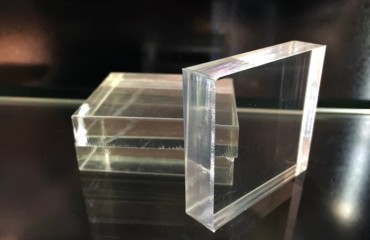There is a growing tendency for some collectors to display their more valuable specimens on acrylic bases. But we think there are many reasons for not doing so.
First of all, these bases often detract from the actual specimen itself because they reflect light in all directions so that the eye is drawn more to the base than to the specimen. If you choose to use such bases, pick thin ones, ones that are not highly reflective.
Second, these bases are often laser-printed with permanent details of the specimen. As a result, if any of the specimen's details change, there is no way to easily alter them. And this happens more than you might think. For instance, outdated location or species data. So a flexible approach is key.
Finally, and most importantly, the specimens are often attached to the base using hot glue. If you wish to remove the specimen, this material is notoriously difficult to remove without damaging a specimen—either by pulling off parts of the matrix or by forming thin strands that stick to the specimen and are almost impossible to get off.
In conclusion, our objection is not to small acrylic stands on which a specimen might be supported. Instead, it's directed at the eye-catching, thick acrylic bases with beveled edges and engraved labels.
We think they are more of an eyesore than an enhancement. They reflect light more than most mineral specimens, cannot be changed, and will usually damage the specimen when trying to remove them.

